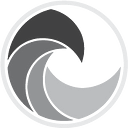Active, Passive, and Dynamic EQs and When to Use Them
Equalization is the fundamental process to avoid sound masking. This process consists of capturing each instrument and knowing its place in the final mix. To achieve this, professionals like Enhanced Media use a sound controller that allows them to raise and lower the volume of the frequencies they want. They call it equalizer (EQ). With this, you can make, for example, an instrument sound the way you want by giving volume to the frequencies you prefer or by lowering or removing the unnecessary frequencies. Several musicians in their home studio approach the mixing process with the idea that everything has to be EQ’d, and that it always has to be done. This is generally true, but do they really know what equalization is supposed to achieve? And, if they do, do they know how to achieve it?
Well, if you are asking such questions, be cool. When beginners don’t know what to do, they move and press everything here and there without knowing what they’re doing, and they mess up with plugins without really being clear why they’re doing it and what exactly they want to get. So, be cool: during mixing, we make use of EQs simply to achieve two basic things. On the one hand, to correct the possible shortcomings of a track. Many times the microphonic takes of musical instruments and vocals are not entirely correct, either because of bad acoustics in the rooms where they were recorded, or because of not having used good equipment, good converters, good microphones, or, even worse, because the person who carried out the recording process did not have the slightest idea of what he/she was doing in the studio. On the other hand, equalization during mixing ensures that the different musical elements fit perfectly with each other. Besides these two fundamental functions of EQing during mixing, we could add a third one, less important than the previous ones, indeed, at least when it comes to technical terms: the mixer’s creative licenses when he/she wants to play with the content and form of the artistic piece he/she is working with.
Now, there are several types of EQs and it is tremendously important to learn how to differentiate them to use them correctly. Let’s see.
In general, there is the first classification of EQs into active and passive. Passive EQs were created in the ’50s and ’60s using resistors, capacitors, and inductors in their circuits. A passive EQ is one in which no component regarding signal amplification is involved and its treatment is carried out by totally passive elements; normally, after the EQ treatment, attenuations are used, as well as an amplifier that restores the input level to the circuit. From the 1970s to our time, the design turned mainly to active circuits that incorporate transformers and amplifiers to be able to boost any gain loss produced during the equalization and filtering process. Active EQs are those in which the function is controlled by elements that perform the amplification.
There are additional categories, and one of them is the dynamic equalizer. As the name implies, dynamic EQ refers to movement, when the bands are not static, as they can move during the mixing process. In a normal equalizer, if you have, for example, 100 Hz, and you attenuate 3 dB in a band, in the output you should have around 9; and, if you subtract 3 dB from the input level, in the output you would have 12. In consequence, there is a constant ratio with very little sensitivity to subtleties. In a dynamic EQ, things are a little more complex. If you attenuate 3 dB, and you bring it back to 6 and then increase 3, the result will be much more variable (an attenuation of -11, approximately), and, if you decrease, for example, the input level by 6 dB, the attenuation level will be much lower, meaning, the band stops attenuating little by little. Hence the band varies depending on the input level. The latter can be quite useful, and we will see why.
What is the main criterion for using a particular EQ? The answer is simple. The criterion is the problem that each type of EQ solves, which is directly related to your technical and creative needs. The problem solved by a dynamic equalizer is, for instance, the precise attenuation of a large number of bands (especially when there are voices with too wide ranges). The risk of this type of EQ is that its excessive use can produce a pumping of sound that could be quite annoying, almost disturbing. An active EQ could be especially useful when it comes to mastering, but certainly when there is a constant abrupt increase and decrease of frequencies that forces you to clean up the sound (running the risk of breaking the mix if you are not careful…). On the contrary, the passive equalizer, due to its simplicity, allows you to perform a wide sweep and the inclusion of subtle details during the edition phase. With this type of EQ, it is only possible to reduce frequencies, never boost them, and, because there are no amplifying elements, the resulting sound is quite clean.
In other words, there are no better or worse EQs. It all depends on what you need, and, for that, you must understand the differences very well. There are other types of EQs, of course, (parametric, semi-parametric, and graphic), but that may be the subject of another post.
